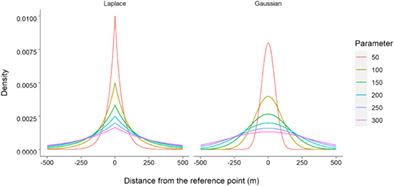当前位置:
X-MOL 学术
›
Ecol. Res.
›
论文详情
Our official English website, www.x-mol.net, welcomes your feedback! (Note: you will need to create a separate account there.)
Modeling dispersal using capture–recapture data: A comparison of dispersal models
Ecological Research ( IF 2 ) Pub Date : 2020-09-22 , DOI: 10.1111/1440-1703.12168 Akira Terui 1
Ecological Research ( IF 2 ) Pub Date : 2020-09-22 , DOI: 10.1111/1440-1703.12168 Akira Terui 1
Affiliation

|
Capture–recapture methods have been a cornerstone of field‐based dispersal ecology. However, obtaining unbiased estimates of dispersal parameters from capture–recapture data is challenging because it is impossible to survey all possible range of dispersal in the field. There are several approaches to address this critical issue of capture–recapture methods. Still, a lack of formal comparisons among these modeling approaches has confused about which is the best practice given the available dataset. Here, I compared the performance of three dispersal models using test datasets simulated under various sampling designs. In the first approach, a probability distribution (a dispersal kernel) was simply fitted to the capture–recapture data (the “simple dispersal model”). In the second approach, a truncated probability distribution was used to account for the finite range of observations (the “truncated dispersal model”). Finally, the dispersal and observation processes were coupled to consider the spatial organization of sampling designs (the “dispersal–observation model”). The simulation study provided three important insights. First, the dispersal–observation model provided reliable estimates of dispersal parameters, even under sampling designs with a few recaptures. Second, the truncated dispersal model was also effective, but only when the number of recaptures was large. Finally, the use of the simple dispersal model caused a substantial underestimation of dispersal parameters regardless of sampling designs; this modeling approach should be avoided where possible. The results of this simulation study should help choose a suitable modeling approach.
中文翻译:

使用捕获-再捕获数据对扩散建模:扩散模型的比较
捕获-捕获方法一直是基于现场的扩散生态学的基石。但是,从捕获-再捕获数据中获得无偏差的扩散参数估计是一项挑战,因为不可能在野外调查所有可能的扩散范围。有几种方法可以解决捕获-捕获方法的这一关键问题。尽管如此,在这些建模方法之间缺乏形式上的比较,在给定可用数据集的情况下,哪种方法是最佳做法还是很困惑。在这里,我使用在各种采样设计下模拟的测试数据集比较了三种扩散模型的性能。在第一种方法中,将概率分布(扩散核)简单地拟合到捕获-再捕获数据(“简单扩散模型”)。在第二种方法中 截短的概率分布用于说明观测值的有限范围(“截短的离散模型”)。最后,将分散和观测过程结合起来考虑抽样设计的空间组织(“分散-观测模型”)。仿真研究提供了三个重要的见解。首先,即使是在采样设计很少的情况下,分散观测模型也可以提供可靠的分散参数估计值。其次,截短的扩散模型也有效,但仅当重新捕获的数量很大时才有效。最后,不管样本设计如何,使用简单的扩散模型都会导致扩散参数的低估。应尽可能避免使用这种建模方法。
更新日期:2020-09-23
中文翻译:

使用捕获-再捕获数据对扩散建模:扩散模型的比较
捕获-捕获方法一直是基于现场的扩散生态学的基石。但是,从捕获-再捕获数据中获得无偏差的扩散参数估计是一项挑战,因为不可能在野外调查所有可能的扩散范围。有几种方法可以解决捕获-捕获方法的这一关键问题。尽管如此,在这些建模方法之间缺乏形式上的比较,在给定可用数据集的情况下,哪种方法是最佳做法还是很困惑。在这里,我使用在各种采样设计下模拟的测试数据集比较了三种扩散模型的性能。在第一种方法中,将概率分布(扩散核)简单地拟合到捕获-再捕获数据(“简单扩散模型”)。在第二种方法中 截短的概率分布用于说明观测值的有限范围(“截短的离散模型”)。最后,将分散和观测过程结合起来考虑抽样设计的空间组织(“分散-观测模型”)。仿真研究提供了三个重要的见解。首先,即使是在采样设计很少的情况下,分散观测模型也可以提供可靠的分散参数估计值。其次,截短的扩散模型也有效,但仅当重新捕获的数量很大时才有效。最后,不管样本设计如何,使用简单的扩散模型都会导致扩散参数的低估。应尽可能避免使用这种建模方法。



























 京公网安备 11010802027423号
京公网安备 11010802027423号